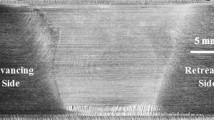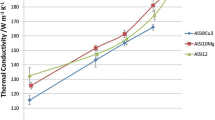Abstract
A TEM study of unstretched, heat-treated aluminium alloy 2219 was performed with the aim of correlating the microstructure with hardness (H) and eddy current conductivity (C) data. Recently Chihoski has developed a new method of evaluating heat treatments of aluminium alloys by constructing in an H-C field a “sail” formed by a network of curved coordinate lines of quenching and ageing times. In this paper it is shown that a pair of H-C values, as represented by a point in the “sail” is uniquely related to the microstructure. The hardness after quenching (zero ageing) depends on the amount of primary θ′- and θ-phases developed during quenching, and decreases with increased precipitate incoherency and size. Upon ageing at 190° C, H first increases due to precipitation of coherent zones and phases (e.g. GP(1) and θ″), then decreases after a θ″→θ′ transformation mainly due to changes in their relative population and, to a much lesser degree, due to loss of coherency in the θ′. The conductivity is mainly a function of the copper solute concentration in the matrix, and increases significantly only when copper is drained from the matrix to form θ′ and θ. The study supports Chihoski's conclusion that construction of a “sail” for a given aluminium alloy provides a quick, nondestructive method for determination of precipitation processes, and can be very useful in quality control, failure analysis and metallurgical research.
Similar content being viewed by others
References
R. Chihoski, Proceedings of the DARPA Conference on Review of Progress in Quantitative NDE, San Diego, August 1982 (Plenum Publishing Co., 1982).
Idem, Met. Prog. 123 (6) (1963) 27.
E. Hornbogen, Aluminium 43 (1967) 164.
R. B. Nicholson and J. Nutting, Phil. Mag. 3 (1958) 531.
H. YoshidA, D. J. H. Cockayne and M. J. Whelan, ibid. 34 (1976) 89.
A. Guinier, J. Phys. Radium 8 (iii) (1942) 124.
V. A. Phillips, Acta Metall. 23 (1975) 751.
L. Swartzendurber et al., NBS Report NBSIR 80-2069, December 1980.
C. Laird and H. I. Aaronson, Acta Metall. 14 (1966) 121.
G. C. Weatherly and R. B. Nicholson, Phil. Mag. 17 (1968) 801.
F. Fouquet, P. Merle M. Kohen J. Merlin and P. F. Gobin, Acta Metall 27 (1979) 315.
J. M. Papazian, Met. Trans. A 12A (1981) 269.
M. Rosen, E. Horowitz, S. Fick, R. C. Reno and R. Mehrabian, Mater. Sci. Eng. 53 (1982) 163.
Author information
Authors and Affiliations
Rights and permissions
About this article
Cite this article
Natan, M., Chihoski, R.A. Relationship between microstructure, hardness and electrical conductivity of 2219 aluminium. J Mater Sci 18, 3288–3298 (1983). https://doi.org/10.1007/BF00544153
Received:
Accepted:
Issue Date:
DOI: https://doi.org/10.1007/BF00544153




